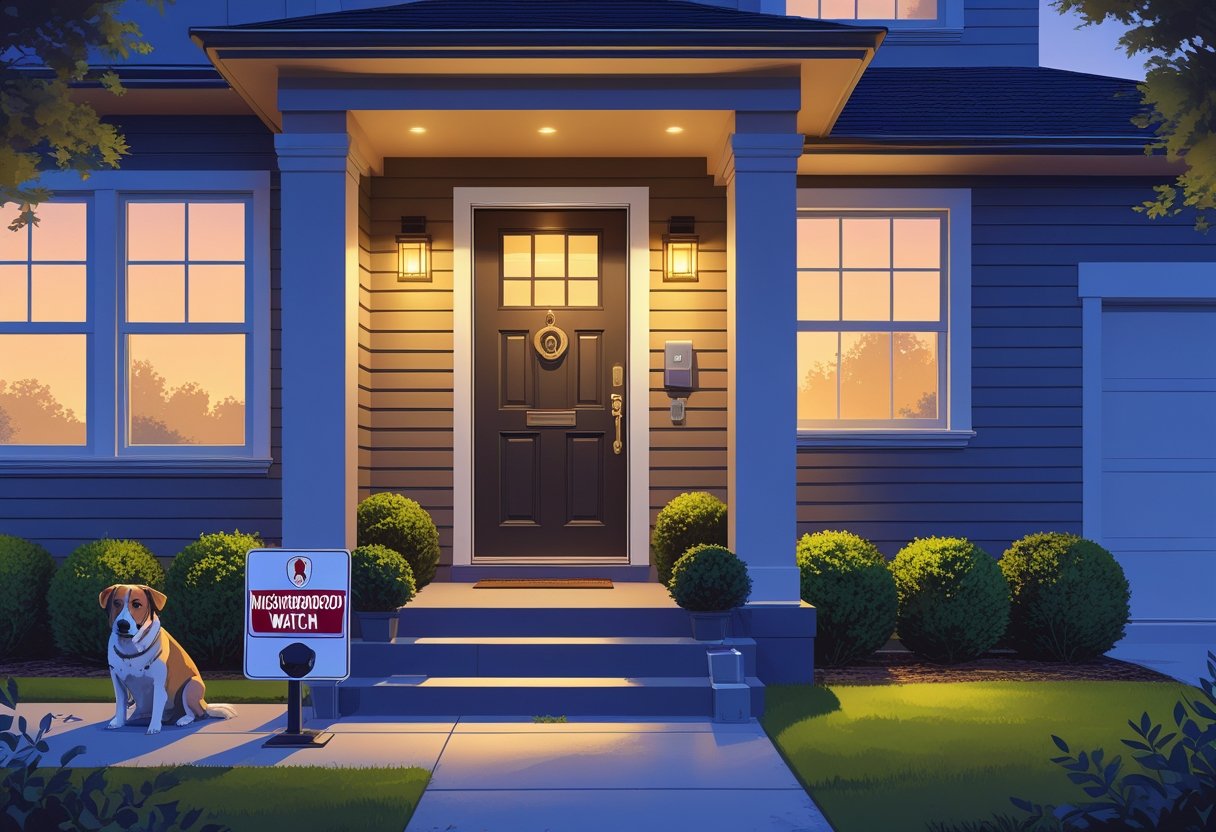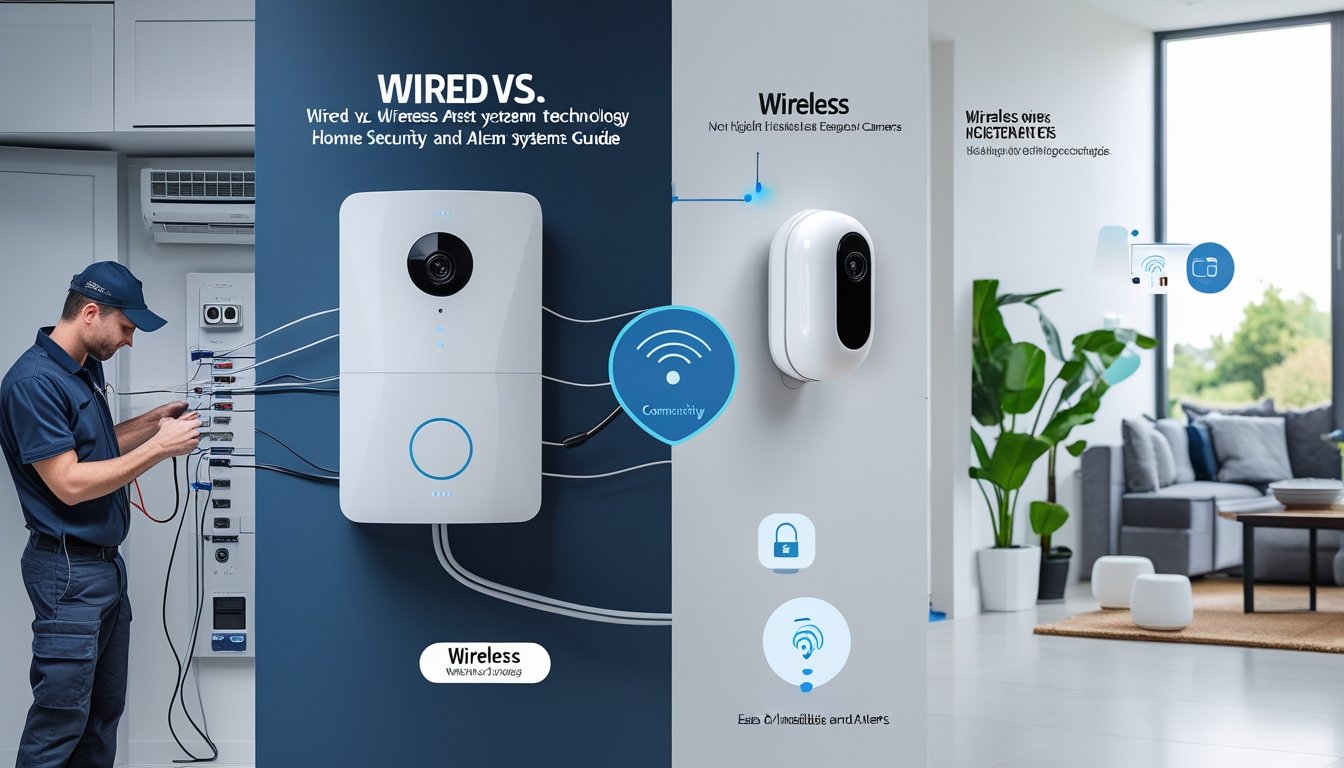Securing your home without an alarm system is entirely feasible, and it can be cost-effective. Implementing strategic measures such as strong locks, outdoor lighting, and neighborhood watch programs can significantly enhance your home’s security. Many homeowners worry that without an alarm, they are at a higher risk for intrusions, but there are numerous effective alternatives.
By focusing on both physical deterrents and behavioral changes, you can create an environment that discourages potential burglars. Simple actions like keeping windows locked and using motion-sensor lights can make a substantial difference. Additionally, fostering community ties and communication with neighbors can increase overall vigilance in your area, further contributing to your home’s safety.
If you’re in the greater Houston area, it's essential to explore local strategies that might uniquely suit your surroundings. Understanding how to leverage your environment can empower you and set a solid foundation for protecting your home effectively.
Understanding Home Security Fundamentals
Effective home security requires an understanding of various vulnerabilities and psychological factors that contribute to burglaries. By identifying these aspects, you can implement strategies to protect your home more effectively.
Common Vulnerabilities in Residences
Every home has specific vulnerabilities that intruders can exploit. The primary areas to focus on include:
- Doors: Many burglaries occur through weak front or back doors. Use solid core doors with deadbolt locks.
- Windows: Unlocked or single-pane windows can be easily compromised. Install window locks and consider reinforcing glass with security film.
- Landscaping: Overgrown shrubs or trees near windows can provide concealment for burglars. Keeping landscaping trimmed reduces hiding spots.
Identifying these vulnerabilities allows you to address them directly, strengthening your home’s defenses significantly.
The Psychology of Burglaries
Understanding the mindset of burglars can inform your security measures. Intruders often seek quick and easy targets. Key psychological factors include:
- Target Selection: Burglars prefer homes that appear unoccupied. Simple signs like newspapers accumulating or uncut lawns signal absence.
- Disruption: Noise and unexpected activity can deter a burglar. Dogs barking or lights flickering can create hesitation.
- Visible Deterrents: Homes with security signs or visible cameras can discourage theft. The presence of deterrents can decrease the likelihood of a break-in.
By considering these psychological elements, you can create an environment that minimizes the appeal of your home to potential intruders.
Risk Assessment Strategies
Conducting a thorough risk assessment is crucial to enhancing your home security. Consider the following steps:
- Walk Through Your Home: Identify potential weak points, such as unsecured doors and poor visibility areas.
- Evaluate Lighting: Ensure all entry points are well-lit, particularly during the evening hours. Motion-sensor lights can be very effective.
- Neighborhood Awareness: Engage with neighbors to keep an eye on each other’s properties. A vigilant community can act as a powerful deterrent against crime.
Implementing a structured risk assessment can provide a comprehensive view of your home’s security needs, allowing you to take targeted action.
Securing Entry Points Without an Alarm
Securing your home's entry points is critical in deterring intruders. Focused efforts on doors, windows, and the garage create a comprehensive defense against break-ins.
Strengthening Door Security
Start by choosing solid-core or fiberglass doors instead of hollow ones. A sturdy door makes forced entry much more difficult.
Install high-quality deadbolt locks; these provide better security than standard knob locks. Ensure the deadbolt extends at least one inch into the doorframe for maximum strength.
Consider adding door reinforcement plates and installing a peephole to verify who is at the door. Using a security door with a smart lock can also provide added convenience and safety.
Upgrading Window Locks and Bars
Windows are often vulnerable points of entry. Upgrade standard window locks with high-security versions that resist tampering.
Consider adding window bars or security screens, especially on ground floor windows. These act as a physical barrier without obstructing views.
Regularly check for any gaps around the window frames and ensure they are sealed tightly. This not only improves thermal efficiency but also deters potential intruders.
Garage Security Measures
Your garage can be an easy target for burglars if not properly secured. Start by ensuring the main garage door has a sturdy lock and an automatic opener with rolling code technology.
Install a secondary lock for your side door leading into the home. This adds an extra layer of security.
To enhance security further, consider motion-sensor lights around your garage. Burglars are less likely to approach unlit areas. Regularly inspect your garage windows and doors for any damage and ensure they are functioning properly.
Enhancing Outdoor Deterrents and Visibility
Effective home security without an alarm includes strategic outdoor enhancements. By focusing on lighting, choosing the right plants, and utilizing psychological tactics, you can significantly increase your home's deterrent effects against potential intruders.
Motion-Activated Lights Installation
Installing motion-activated lights around your property is a powerful deterrent. These lights illuminate areas when they detect movement, surprising intruders and drawing attention to the activity.
Consider placing lights near entrances, pathways, and dark corners where visibility is crucial. Look for models with a range of sensitivity and timing adjustments to cater to your environment.
Use bright LED bulbs as they provide excellent visibility while being energy efficient. Furthermore, incorporating solar-powered options can reduce your electricity bills while ensuring your property is well-lit at night.
Using Thorny Plants as a Barrier
Thorny plants can serve both decorative and security purposes. Strategically placing these types of vegetation around windows and fences creates a natural barrier that deters intruders.
Common options include roses, barberry, and holly, which are not only difficult to navigate through but also enhance the aesthetic appeal of your yard. When planting, maintain adequate spacing to ensure they grow thickly and form an effective obstacle.
Regular pruning will keep the plants healthy and thorny. This living defense complements your security measures and ensures that potential entry points are less inviting.
Security Signs as Psychological Deterrents
Simple signs indicating the presence of security measures can have a strong psychological impact. Placing signs that say “Protected by [Your Company]” or “Security Cameras in Use” can make intruders think twice before approaching your property.
Make these signs visible from the street and position them strategically at key entry points. Even if you do not have a formal security system, claiming you do can boost your home’s perceived security.
Use bold fonts and bright colors to ensure clarity. Investing in durable materials for these signs will ensure they withstand the elements, maintaining their impact over time.
Leveraging Technology and Smart Devices
Utilizing advanced technology and smart devices can significantly enhance your home's security without the need for a traditional alarm system. These solutions offer convenience, efficiency, and peace of mind that can be tailored to your specific needs.
Deploying Security Cameras Without Monitoring
Installing security cameras around your home can be a proactive way to deter intruders. Using indoor security cameras allows you to monitor activity in key areas such as entryways and living spaces. Many models come with features like motion detection, night vision, and remote access via smartphone apps.
You can opt for a system that saves footage locally or to the cloud, allowing you to review recordings at your convenience.
Smart Locks for Keyless Entry
Smart locks offer an effective means of securing entry points without the hassle of physical keys. With these devices, you can manage access to your home remotely. Features like temporary access codes make them ideal for visitors or service personnel without compromising your security.
Many smart locks also provide real-time notifications, alerting you whenever someone accesses your door. This ensures that you remain informed about who enters your home.
Integrating Smart Home Devices
Integrating various smart home devices can create a comprehensive home security solution. For instance, linking your security cameras and smart locks allows for a seamless security experience. When your security camera detects motion, it can trigger your smart lock to lock automatically, enhancing your home's defenses.
Additionally, using smart lighting systems can further deter potential intruders. Automated lights that turn on and off can give the impression that someone is home, even when you're not. Systems like Alarm Masters offer extensive customization and scheduling options, making your home less attractive to burglars.
By leveraging these smart technologies, you can create a secure environment tailored specifically to your needs in the greater Houston area.
Community and DIY Approaches to Home Security
Taking proactive steps within your community and implementing DIY solutions can significantly enhance your home security. Engaging with your neighbors and utilizing basic home improvement projects can create a safer environment for everyone.
Participating in Neighborhood Watch Programs
Joining a neighborhood watch program can be one of the most effective strategies to enhance security in your area. These programs foster communication among residents, allowing you to share information about suspicious activities or potential threats.
By getting involved, you help build a sense of community. Regular meetings can provide valuable safety tips and updates. Local law enforcement often supports these initiatives, offering training on recognizing and reporting crime.
Make connections with your neighbors and establish a contact list for quick communication. When residents look out for one another, it can deter criminal activity and enhance everyone's safety.
Utilizing Guard Dogs Effectively
A well-trained guard dog can be a formidable deterrent against intruders. These dogs not only alert you to possible threats but can also provide a sense of companionship.
Choose a breed known for its protective instincts, such as a German Shepherd or Rottweiler. Training is essential; consider professional help to ensure your dog is well-regarded and obedient.
Establishing boundaries for your dog is important to maintain safety. Ensure your property is secure with high fences and gates. Proper care and attention to your dog's behavior can create a protective barrier for your home.
DIY Home Security Projects
Implementing DIY security measures can effectively protect your home. Simple projects can enhance safety without breaking the bank.
Consider the following ideas:
- Install Motion-Sensor Lights: These lights can deter intruders by lighting up areas around your property when someone approaches.
- Reinforce Doors and Windows: Adding deadbolts, window locks, and security bars can fortify access points.
- Set Up Security Cameras: Affordable options are available that let you monitor your home remotely through your smartphone.
- Use Smart Technology: Investing in smart doorbells or sensors adds an extra layer of convenience and security.
By taking these steps, you create a more secure environment for you, your family, and your community.
Frequently Asked Questions
You may have several questions about securing your home without relying on alarm systems. The following sections address various strategies, tips, and recommendations to enhance your home security effectively.
What are some affordable methods to enhance the security of my home?
Consider installing deadbolt locks on all exterior doors to strengthen entry points. Window locks and security bars can also provide extra protection without significant investment. Additionally, using motion-activated lights around your property improves visibility and acts as a deterrent.
What strategies do police recommend for improving residential security?
Local police often suggest forming a neighborhood watch group to increase vigilance and communication among residents. Regularly sharing information about suspicious activities helps keep everyone informed. Keeping your yard well-maintained and vegetation trimmed also reduces hiding spots for potential intruders.
What are some unconventional home security tips that are highly effective?
Using natural deterrents such as thorny bushes near windows can dissuade break-ins. Displaying fake security cameras may also create the illusion of a monitored property. Even posting warning signs for pets can deter intruders who might be cautious about approach.
How can I protect my home from intruders without relying on electronic security systems?
Enhancing physical security measures is key. Install strong locks on doors and windows, and use reinforce plates on hinges. Creating barriers with fences or gates can further control access to your property while keeping it visible from the street.
What measures can make a residence highly secure from burglaries?
Employ a layered security approach by combining various measures. This might include using heavy doors with solid frames, reinforcing sliding doors with security bars, and utilizing gravel in walkways to create noise when someone approaches. These tactics significantly reduce the chances of a burglary.
Are there deterrents that are known to be particularly disliked by burglars?
Burglars tend to avoid homes with dogs, as they can be unpredictable and loud. Leaving your lights on a timer to create the appearance of occupancy can also discourage potential break-ins. Additionally, some burglars dislike homes with visible surveillance signs, even if no cameras are present.
.svg)


.svg)


.svg)



